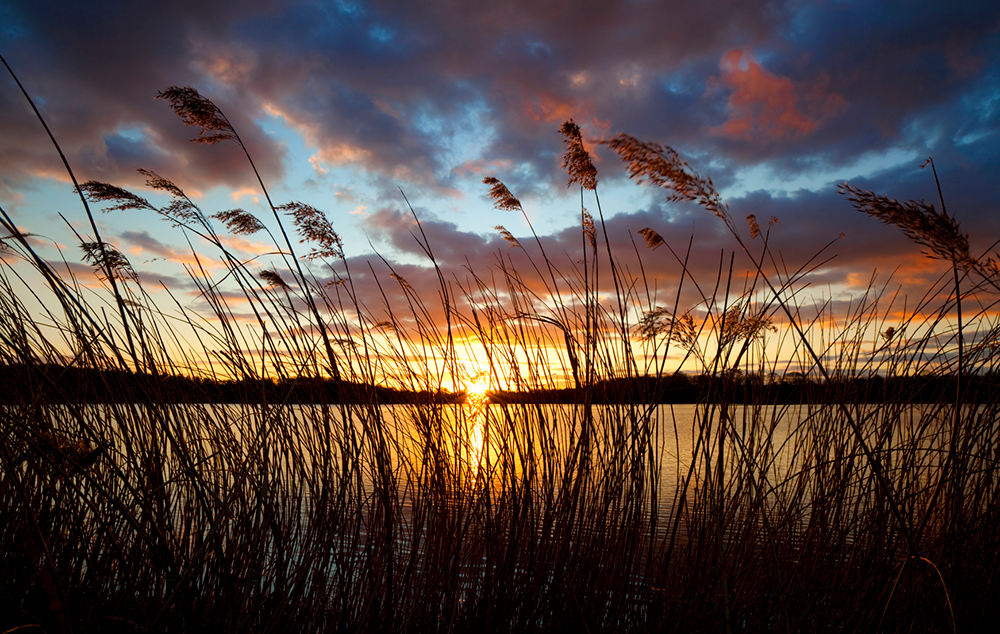Perfect Winter Sunsets
Few photographers can resist the draw of a vibrant winter sunset, but not all of us manage to pull off a great shot. Images can sometimes look insipid or lack a focal point when the main subject is the sky – so how do you get it right? Here are a few pointers.
Find a good skyline
Although the colours in the sky are usually the main focus of a sunset shot, an image of just the sky rarely works. The answer is not the sky, but the skyline. Finding a really strong skyline that sets off the sunset, giving scale and context, can make all the difference.
Buildings can work well in the city, or trees in the countryside, but you can also get down low to make use of smaller plants. Even people can make great silhouettes against a colourful sky.
Whatever you shoot, make sure that it’s nice and distinct, not a mush of tangled brambles or amorphous blogs of branches.
Shoot silhouettes
If the sky makes up the majority of the frame, there’s a good chance that your camera will underexpose the foreground in many instances. That’s often fine, because it will also intensify the colours in the sky and a strong skyline will make for a good silhouette.
Don’t forget to consider the rule of thirds when you’re composing the shot, and move around to find a good angle.
It’s important to make sure that the outline of a silhouette as well as the sky is sharp – that means that you’ll need to use a small aperture to ensure plenty of depth of field.

Find some water
Water and damp surfaces will reflect the colours of the sky, making for a more interesting photograph with greater impact.
Balance the exposure
If you want some detail in the foreground, you’ll need to balance the exposure of the bright sky with that of the darker land. The easiest way to do that is to use a graduated neutral density filter. Slide the filter into the filter holder with the darker portion covering the sky to reduce its brightness.
You could also slip an amber filter into the filter holder to warm-up the landscape even further, but you can also do this via your camera’s white balance control, setting it to Daylight, Cloudy or Shade rather than the automatic setting.

Use a wide-angle lens
Many sunset shots are essentially landscapes taken as the sun is setting, and wide-angle lenses are often favoured because they allow you get include a sweeping vista. Wide-angle lenses also have the advantage of bringing extensive depth of field at any given aperture setting - perfect when you want the foreground and the sky sharp.
Use a tripod
Light levels are low at sunset, which means slow shutter speeds, especially if you’re using a graduated neutral density filter and a small aperture, so that makes a tripod essential. A good, solid tripod will keep your camera nice and steady to enable you to create sharp images. A remote release will also help reduce blur by allowing you to fire the shutter without touching the camera.
- By Matthew Ward
- 9 Nov 2016




























































